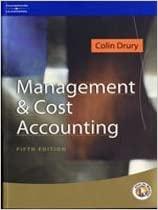K FIGURE egular: $202.94 er unit PROBLEM 5-2 Contrasting ABC and Traditional Product Costs [LO1 - CC1; L02 - CC3, 6, 7] Siegel Corporation manufactures a product available in both a deluxe and a regular model. The company has made the regular model for years, the deluxe model was introduced several years ago to capture a new seg. ment of the market. Since the introduction of the deluxe model, the company's profits have steadily declined, and management has become concerned about the accuracy of its costing system. Sales of the deluxe mode! have been increasing rapidly. Overhead is applied to products on the basis of direct labour-hours. At the beginning of the current year, management estimated that $5,184,000 in overhead costs would be incurred and the company would pro- duce and sell 5,000 units of the deluxe model and 40,000 units of the regular model. The deluxe model requires 3.2 hours of direct labour time per unit, and the regular model requires 0.8 hours. Materials and labour costs follow Deluxe Direct materials cost per unit Direct labour cost per hour $150 14 Regular S112 16 We've updated our read aloud featurel Give it a try here Activity-Based Costing Required: 1. Compute the predetermined overhead rate using direct labour-hours as the basis for allocating overhead costs to products. Compute the unit product cost for one unit of each model. 2. An intern suggested that the company use activity-based costing to cost its products. A team was formed to investigate this idea, and it came back with the recommendation that four activity cost pools be used. These cost pools and their associated activities follow: Activity Estimated Overhead Cost Total Activity Cost Pool and Activity Measure Purchase orders (number of orders) Rework requests (number of requests) Product testing (number of tests) Machine related (machine-hours) $ 476,800 562.400 908,000 3,236,800 $5.184,000 Deluxe 1.184 810 5.000 15.240 Regular 1.200 1,440 6,350 25.220 2.384 2.250 11,350 40,460 Compute the activity rate (1.e., predetermined overhead rate) for each of the activity cost pools 3. Assume that actual activity is as expected for the year. Using activity-based costing, do the following: a. Determine the total amount of overhead that would be applied to each model for the year. b. Compute the unit product cost for one unit of each model. 4. Can you identify a possible explanation for the company's declining profits? If so, what is it








